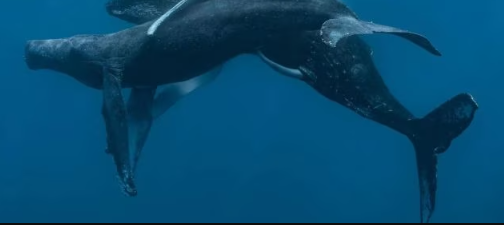In 2022, researchers made a groundbreaking observation of humpback whales engaging in sexual activity off the coast of Hawaii. The documented encounter involved Whale B, which consistently extruded its penis throughout the entire interaction and intermittently penetrated the genital opening of Whale A, utilizing its pectoral fins for support. Interestingly, both whales involved in this mating behavior were male.

Instances of homosexuality are not rare in the natural world, spanning over 1500 animal species, including insects, spiders, reptiles, birds, and mammals. This phenomenon occurs in both genders, across various environments, as highlighted in the 2023 study titled “The evolution of same-sex sexual behavior in mammals” by J M Gomez, A Gonzalez-Megias, and M Verdu.
A paradox emerges when considering Darwinian principles. Charles Darwin’s theory of evolution revolves around the idea that the primary goal of organisms is reproduction, ensuring the transmission of genes to subsequent generations. However, same-sex sexual behavior appears counterproductive to this objective, diverting resources and time away from reproduction.
One hypothesis gaining attention is the “indiscriminate mating” hypothesis, suggesting that ancestral animal species mated without specific regard to sex due to the simultaneous evolution of traits needed for recognizing compatible mates. This approach, outlined in the 2019 study by A Kamath et al. titled “An alternative hypothesis for the evolution of same-sex sexual behavior in animals,” contends that the diversity in present-day sexual behavior stems from an ancestral history of indiscriminate mating among individuals of all sexes.
Alternative explanations propose adaptive functions for homosexual behavior. Evolutionary biologists N W Bailey and M Zuk theorized that same-sex sexual behavior contributes to establishing and maintaining positive social relationships. The 2019 study by Gomez, Gonzalez-Megias, and Verdu found evidence supporting this, establishing a direct correlation between the incidence of same-sex sexual relations and sociality, suggesting that such behavior strengthens social bonds within a group.
Bailey and Zuk also posited that same-sex sexual behavior helps diminish intrasexual aggression and conflict, potentially serving to communicate social status, establish dominance hierarchies, and prevent future conflicts. This hypothesis aligns with the findings of Gomez, Gonzalez-Medias, and Verdu, who observed that same-sex sexual behavior in mammals can mitigate adulticide, particularly among males, indicating that it is a convergent adaptation with specific survival benefits rather than an aberrant behavior.





